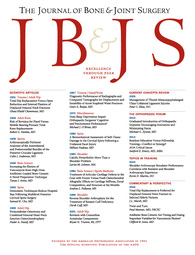
PEDIATRIC ORTHOPAEDICS
Both lateral and medial/lateral entry pin fixation effective in supracondylar fractures
J Bone Joint Surg Am. 2007 Apr;89(4):706-1252 children with completely displaced (Type-III) extension supracondylar humerus fracture were randomized to receive either lateral entry pin fixation, or crossed lateral and medial entry pin fixation. This study aimed to compare loss to reduction and incidence of iatrogenic ulnar nerve injury. Results demonstrated that both procedures were effective in treating type-III extension supracondylar humerus fractures at the 3-month follow-up. Both groups did not have a major loss of reduction, and there was no significant difference between rates of mild loss of reduction. Furthermore, both groups showed no cases of iatrogenic ulnar nerve injury.
Unlock the full ACE Report
You have access to {0} free articles per month.Click below to unlock and view this {1}
Unlock NowCritical appraisals of the latest, high-impact randomized controlled trials and systematic reviews in orthopaedics
Access to OrthoEvidence podcast content, including collaborations with the Journal of Bone and Joint Surgery, interviews with internationally recognized surgeons, and roundtable discussions on orthopaedic news and topics
Subscription to The Pulse, a twice-weekly evidence-based newsletter designed to help you make better clinical decisions
Exclusive access to original content articles, including in-house systematic reviews, and articles on health research methods and hot orthopaedic topics
Or upgrade today and gain access to all OrthoEvidence content for just $1.99 per week.
Already have an account? Log in


Subscribe to "The Pulse"
Evidence-Based Orthopaedics direct to your inbox.
{0} of {1} free articles
Become an OrthoEvidence Premium Member. Expand your perspective with high-quality evidence.
Upgrade Now












































































